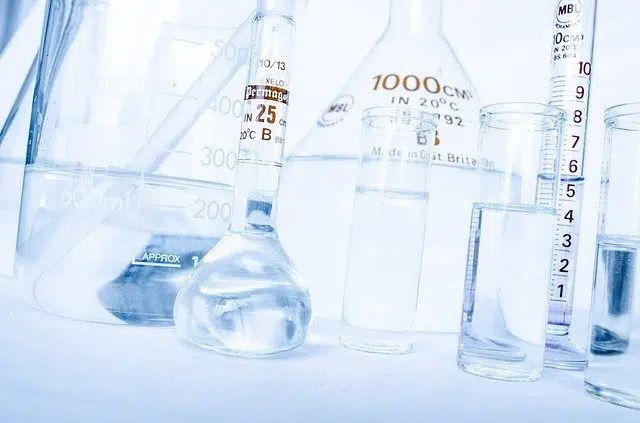
The notion of molar volume is used in chemistry.
Molar volume is a concept that is used in the field of chemistry . The notion is used to name the volume occupied by one mole of a substance , using the cubic meter per mole as a reference unit.
As you can see if we analyze the definition that we mentioned in the first paragraph, to understand what molar volume is, it is essential to understand what volume is and what a mole is.
Analyzing the concepts of volume and mole
The idea of volume can be used in different ways: in this case, we are interested in its meaning as the magnitude that indicates the space occupied by something in height, width and length (that is, in three dimensions). A mole, for its part, is a unit that allows the measurement of the existing quantity of an element that has a weight equivalent to its molecular weight reflected in grams.
It is important to mention that, in every substance, one mole houses an amount of mass that is contained in 6.022 x 10 to the power of 23 molecules . This figure (6.022 x 10 to the power of 23) is called Avogadro's number and is the number of atoms in twelve grams of pure carbon-12 . Avogadro's number allows counting microscopic entities based on microscopic measurements.
It is also necessary to know Avogadro's law , which states that, when different gases are measured under identical conditions of temperature and pressure, they contain the same number of particles.
What is molar volume
Returning to the idea of molar volume , from what was mentioned by Avogadro's law, it follows that the mole of a gas always occupies the same volume when the conditions of temperature and pressure are maintained . The normal molar volume of gaseous substances is 22.4 liters , estimated with a temperature of 0º C and a pressure of 1 atmosphere . This occurs in every ideal gas.

One mole contains a specific amount of mass.
Ideal gases , also known as perfect gases , respond to a law according to which the particles that make up the gas neither attract nor repel each other, and when they collide they do so in a perfectly elastic way.
Therefore, the normal molar volume of a gas , whose value is 22.4 liters, only occurs if we are dealing with an ideal (or perfect) gas, but this does not happen with the so-called ordinary gases ; The latter have molecules with volume, although not considerable, and this makes their molar volume different from 22.4 liters. In any case, these are not very big differences; For example, while carbon monoxide does have this volume, sulfur dioxide and carbon dioxide are 0.5 and 0.1 liters lower, respectively.
The notion of partial molar volume
Taking into account that the volume of a solution is linked to pressure, composition and temperature, and that it is an extensive magnitude, we can define the concept of partial volume as the rate of change of the volume as the amount increases. of substance, as long as the values of temperature, pressure and the quantity of the rest of the components are kept constant.
The partial molar volume is a function of the fractional composition, pressure and temperature; In other words, it is an intensive magnitude and, according to its definition, we can affirm that, if the pressure and temperature do not vary, it intervenes in the differential of the total volume.
When we alter the composition, for example if we add a certain amount of some of the substances, since the total volume of the mixture increases, the partial molar volumes of its components also change, since the environment of its molecules does first. The volume occupied by any number of molecules depends on those that are around it.
